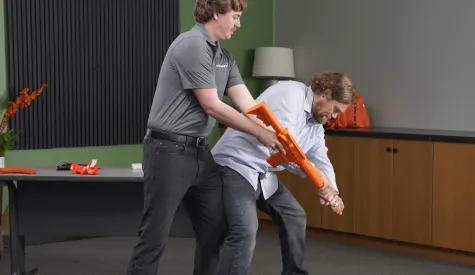STOP THE BLEED® Day: Bleeding Control Techniques

National STOP THE BLEED® Day happens every May. It’s a national awareness campaign that serves as a call-to-action to save lives by training people how to stop traumatic bleeding during an emergency.
It’s well known that severe bleeding can quickly become life-threatening, and with training, anyone in the general public can become an immediate responder to this type of emergency situation.
The Facts
According to the Stop the Bleed Day national campaign:
- Uncontrolled bleeding is a major cause of preventable deaths. Approximately 40% of trauma-related deaths worldwide are due to bleeding or its consequences, establishing hemorrhage as the most common cause of preventable death in trauma.*
- Bleeding can quickly become life-threatening. The average time to bleed out is only 2 to 5 minutes.
- The average first responder arrival time is 7 to 10 minutes.
While first responders do their very best to quickly get to the scene of an emergency, minutes count in uncontrolled bleeding situations. Understanding these facts makes it clear that everyone should, at the very least, know basic bleeding control techniques.
Receiving additional, hands-on training in techniques that stop the bleed can greatly help anyone be better prepared to respond during a life-threatening bleeding emergency.
How to Respond to Life-Threatening Bleeding
A bleeding injury can happen anywhere at any time. Often, the person next to a bleeding victim will be the one most likely to save them while waiting for professional help to arrive.
If you recognize signs of life-threatening bleeding, you need to act right away using methods to stop the bleed.
Three quick emergency bleeding control techniques that can help save a life include:
- Applying proper pressure
- Correctly packing a wound
- Placing a tourniquet
Direct pressure is a standard method to control bleeding anywhere on the body. When applying direct pressure, be sure to:
- Locate the bleeding. Expose and inspect the wound.
- Apply direct pressure. Use a clean pad, and apply firm and constant pressure directly on the point of bleeding.
- Maintain pressure. If blood soaks through the pad, leave it in place and apply a second pad on top of the first. When bleeding is controlled, maintain continuous direct pressure.

For a more serious wound, it may be necessary to pack a dressing into the wound to maintain pressure.
If direct pressure can’t control severe bleeding from an arm or leg, you may need to use a tourniquet to stop the bleeding.
Having an emergency bleeding training kit with essential items close by helps you quickly care for an injured person while you wait for medical help.
Emergency Bleeding and Active Violence Response Training
Interested in learning how to properly apply pressure, pack a wound, and place a tourniquet?
Learn more about our AVIRT program, which combines emergency bleeding control techniques with active shooter response training.
* Curry N, Hopewell S, Doree C, Hyde C, Brohi K, Stanworth S. The acute management of trauma hemorrhage: a systematic review of randomized controlled trials. Crit Care. 2011;15(2):R92.


